This Introduction to Business Analysis training course provides the essentials of the business analysis process, incorporating industry best practises from IIBA®, BCS, and Project Management. Through interactive workshops you will conduct a business needs analysis to elicit stakeholder requirements, apply business analysis techniques to identify key problems and potential opportunities in your enterprise and create effective requirements and communication plans. Improve your analytical competencies by analysing and specifying requirements using industry best practises in this Introduction to Business Analysis course.
In this 3-day Introduction to Business Analysis course, you will learn how to apply a core business analysis framework through interactive workshops.
Introduction to Business Analysis Training: Defining Successful Projects Delivery Methods
- After-course instructor coaching benefit
- Learning Tree end-of-course exam included
Introduction to Business Analysis Training: Defining Successful Projects Course Benefits
Perform external and internal analysis to understand the pressures on the business and root cause of a problemWrite clear requirements for formal and Agile projectsCreate UML models and diagrams to analyse requirementsPerform strategy analysis to understand your organization's business landscapeDevelop user stories and use cases
Introduction to Business Analysis Course Outline
Overview of the business analysis discipline
- What is business analysis?
- The scope of the business analyst’s work
- Responsibilities of the business analyst
Introducing the business analysis process
- From strategy analysis to requirements engineering
- Best practises used throughout the business analysis process
Introducing strategy analysis
- Identifying strategic context
- Performing root cause analysis
Internal analysis
- Responding to business challenges through internal analysis
- Identifying your key stakeholders
- Clarifying the organisational mission using MOST
External analysis
- Optimising organisational flexibility using external analysis
- Investigating competitive pressures using Porter’s Five Forces
- Analysing the business landscape using PESTLE
Identifying your stakeholders
- The stakeholder wheel and identification matrix
- Creating stakeholder personas
Analysing your stakeholders
- Examining stakeholder impact for your project
- Evaluating stakeholder attitude towards your project
- Placing your stakeholder in the organisational hierarchy using STOP
- Developing action-oriented business initiatives to address business needs and opportunities
Managing your stakeholders
- Interacting with your stakeholders
- Creating a stakeholder communication plan
- Assessing your stakeholders
Exploring business and technical options
- Forming scope from business goals and objectives
- Writing the business requirements
Developing criteria and solutions
- Making use of affinity diagrams to elicit high-level criteria
- Comparing evaluation techniques
The structure of the business case
- Creating a pyramid of information
- Using customer-focused persuasion
Analysing costs and benefits
- Categories of costs and benefits
- Identifying tangible and intangible costs and benefits
- Investment appraisal using a cash flow forecast
- Evaluating risk and impact
Defining requirements
- The cost of poor requirements
- Distinguishing between functional and non-functional requirements
- Key sources of requirements
Planning the requirements communication process
- Addressing common pitfalls typically encountered during requirements development
- Actors in the requirements engineering process
- Dealing with tacit and explicit knowledge
Developing the requirements document
- Building the requirements list
- Applying requirements filters
- Developing well-formed requirements
The elicitation process
- Elicitation tools and techniques
- Guidelines and checklists
Eliciting the requirements
- Conducting effective interviews and workshops
- Deploying observation techniques
- Getting user feedback by using prototypes
- Analysing the situation using visualisation techniques
- Spotting non-functional requirements using quantitative analysis
Organising and prioritising requirements
- Arranging requirements by focus
- Gap analysis techniques
Employing modelling techniques
- Modelling the business context
- Shaping the business processes
- Inspecting the requirements
Creating formal requirements documentation
- Structuring a standard functional requirement
- Structuring a standard non-functional requirement
Creating agile requirements documentation
- Developing and splitting user stories
- Crafting, and elaborating on, use cases
Validating the requirements
- Stakeholders and their areas of concern
- Types of validation
Managing the written requirements
- Dealing with changing requirements
- Sources of requirements change
- Components of requirements management
- Delivering the requirements
- Transferring the business solution
- Supporting developmental activities




